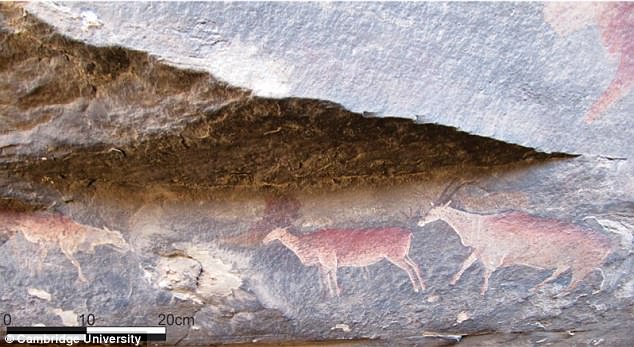
5,000 year old rock art discovered in southern Africa

The oldest known rock art has been discovered in southern Africa and is believed to date back more than 5,000 years – far more ancient than previously realised.
Discovered in Botswana, researchers were able to grab and analyse fragments of the ancient artwork – which includes depictions of scenes involving fish and human figures drawn on the walls of a naturally occurring rock shelter.
By collecting samples of paint, researchers were able to identify the types of carbons in the pigments and ultimately date them as more than 5,000 years old – deeming the drawings the ‘earliest directly dated’ paintings in the region, according to the Daily Mail.
Using a novel technique known as accelerator mass spectrometry radiocarbon dating, where researchers isolate paint fragments, they were able to determine the morphology and the elemental and molecular composition of particular pieces.
The new method “has given us the first really solid dates for the antiquity of surviving rock shelter art in southern Africa,” lead study researcher Adelphine Bonneau, a postdoctoral researcher of archaeology at Lux Laboratory at the University of Québec in Montréal, told Live Science.
The artwork is believed to be from the San, or bushmen, who are native to southern Africa and whose territories span throughout Botswana, Namibia, Angola, Zambia, Zimbabwe, Lesotho and South Africa. The ancestors of the San are considered to have been the first inhabitants of what is now Botswana and South Africa.
A difficult challenge
Dating rock art is a challenging process, it requires researchers to partly destroy the art to be able to analyse it. Moreover, the elements fall against them as wind and rain, as well as plants, animal and human interference can harm the artwork. In one case, Bonneau caught a sheep licking one of the ancient paintings on a rock wall in South Africa.
It has been a huge project and has taken Bonneau and her colleagues over seven years to complete, collecting samples from over 60 sites and dating 14 of them.






